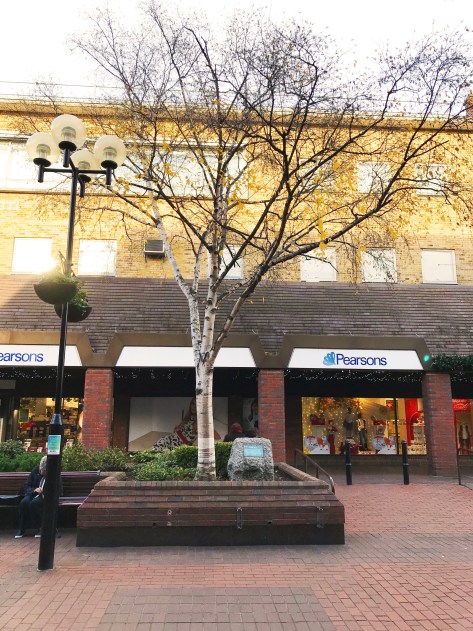Poetry fills Enfield’s air, seeps out of the ground so it is no wonder so many poets are associated with this North London Borough. The first for me is:
Henry VIII who liked to hunt in the vast forest that was the Royal Chase.

His palace, Elsynge was located in, what are now, the grounds of Forty Hall.
![[6533] Elsyng](https://i0.wp.com/anthonyfisherpoet.com/wp-content/uploads/2017/11/6533-elsyng.jpg?resize=360%2C247&ssl=1)
Each year the Enfield Archaeological Society excavate the ruins but have to refill them as the masonry is of such poor quality and would deteriorate if left exposed to the atmosphere: though current thinking is that Elsynge was every bit as grand as Hampton Court. It was certainly his favourite palace and was probably more of a family home. His children Edward and Elizabeth spent a lot of time there and it is where they were told of their father’s death and that Edward was to be king. It is thought that much of the planning of the Reformation was carried out here. Nearby Waltham Abbey was the last monastery to be dissolved as the abbot was a friend of Henry.

Looking down towards the site of Elsynge Palace from the second floor of Forty Hall.
In Henry’s time less than 10% of the population were literate. It was important for the monarch to be perceived as cultured as well as having physical prowess and power, It was the time of courtly love and romance and Henry writing poetry was in keeping with the times. Not a great poet by any means but he spent time on it and I feel that a relaxed atmosphere at Elsynge and the hunting encouraged this creative side of the monarch. He often used his poetry as a political tool, reminding all that he was King and that his will should prevail.
When researching for this blog I was very pleased to discover a book edited by Peter C Herman “Reading Monarchs Writing” which has a series of essays and examples of the poetry of Henry VIII, Mary Stuart, Elizabeth I and James VI/I. Apart from Mary Stuart all had lived in Enfield at one time or another. I emailed Peter Herman who gave me permission to quote from his book and here is one of Henry’s poems. It is very political. Though it begins in a defensive apologetic mood, it ends with an overt statement of Royal power.
Though some say that youth rules me,
I trust in age to tarry.
God and my right, and my duty,
From them shall I never vary,
Though some say that youth rules me.
I pray you all that aged be
How well did you your youth carry?
I think some worse of each degree.
Therein a wager lay dare I,
Though some say that youth rules me.
Pastimes of youth some time among–
None can say but necessary.
I hurt no man, I do no wrong,
I love true where I did marry,
Though some say that youth rules me.
Then soon discuss that hence we must.
Pray we to God and Saint Mary
That all amend, and here an end.
Thus says the King, the eighth Harry,
Though some say that youth rules me.
Finally a poem that sums Henry up I feel. It is rather long so I give just the first stanza.
The Kings Ballad
Pastime with good company
I love and shall until I die.
Grudge who likes, but none deny;
So God be pleased, thus live will I,
For my pastance:
Hunt, sing, and dance.





















